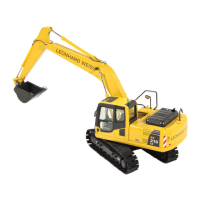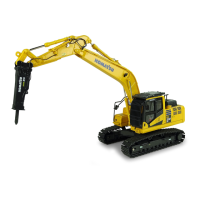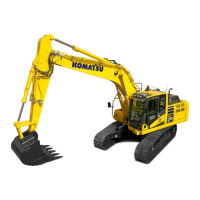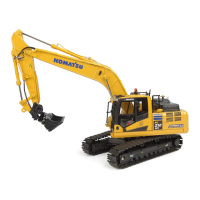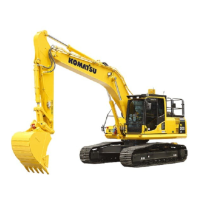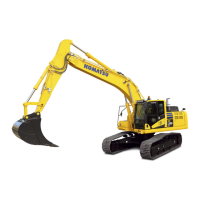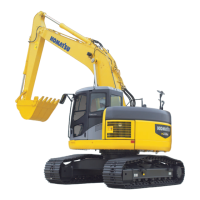5-19
PC210/240-ENG
Table 1
Precautions when usingUseCategory
A
Rocky ground, riverbeds,
normal soil
B Normal soil, soft ground
Extremely soft ground
(swampy ground)
C
Table 2
CategorySpecifications
• On rough ground with large obstacles such as boulders or fallen trees, travel at low
speed.
• These shoes cannot be used on rough ground where there are large
obstacles such as boulders or fallen trees.
• Travel at Hi speed only on flat ground, and if it is impossible to avoid going over
obstacles, shift down and travel at half speed in Lo.
• Use the shoes only in places where the machine sinks and it is impossible to use A
or B shoes.
• These shoes cannot be used on rough ground where there are large
obstacles such as boulders or fallen trees.
• Travel at Hi speed only on flat ground, and if it is impossible to avoid going over
obstacles, shift down and travel at half speed in Lo.
PC210LC-6KPC210-6K PC240-6K PC240LC-6K
CategorySpecifications CategorySpecificationsCategorySpecifications
A
B
C
A
B
C
C
A
B
C
-
A
B
C
C
600 triple grouser
700 triple grouser
800 triple grouser
600 triple grouser
700 triple grouser
800 triple grouser
900 triple grouser
600 triple grouser
700 triple grouser
800 triple grouser
-
600 triple grouser
700 triple grouser
800 triple grouser
900 triple grouser
CategorySpecifications
PC240NLC-6K
B
C
700 triple grouser
800 triple grouser
29.3 SELECTION OF TRACK SHOES
Choose suitable track shoes to match the ground conditions.
METHOD OF SELECTING SHOES
Confirm the category from the list of uses in Table 1, then use Table 2 to select the shoe.
• Categories B and C are wide shoes, so there are limitations on their use. When using these shoes, check the
precautions, then investigate and study fully the conditions of use to confirm that these shoes are suitable.
• When selecting the shoe width, select the narrowest shoe possible that will give the required flotation and
ground pressure. If a wider shoe than necessary is used, the load on the track will increase, and this will cause
the shoes to bend, links to crack, pins to break, shoe bolts to come loose, and various other problems.
29. INTRODUCTIONS OF ATTACHMENTS
-
-
5-19
5-17

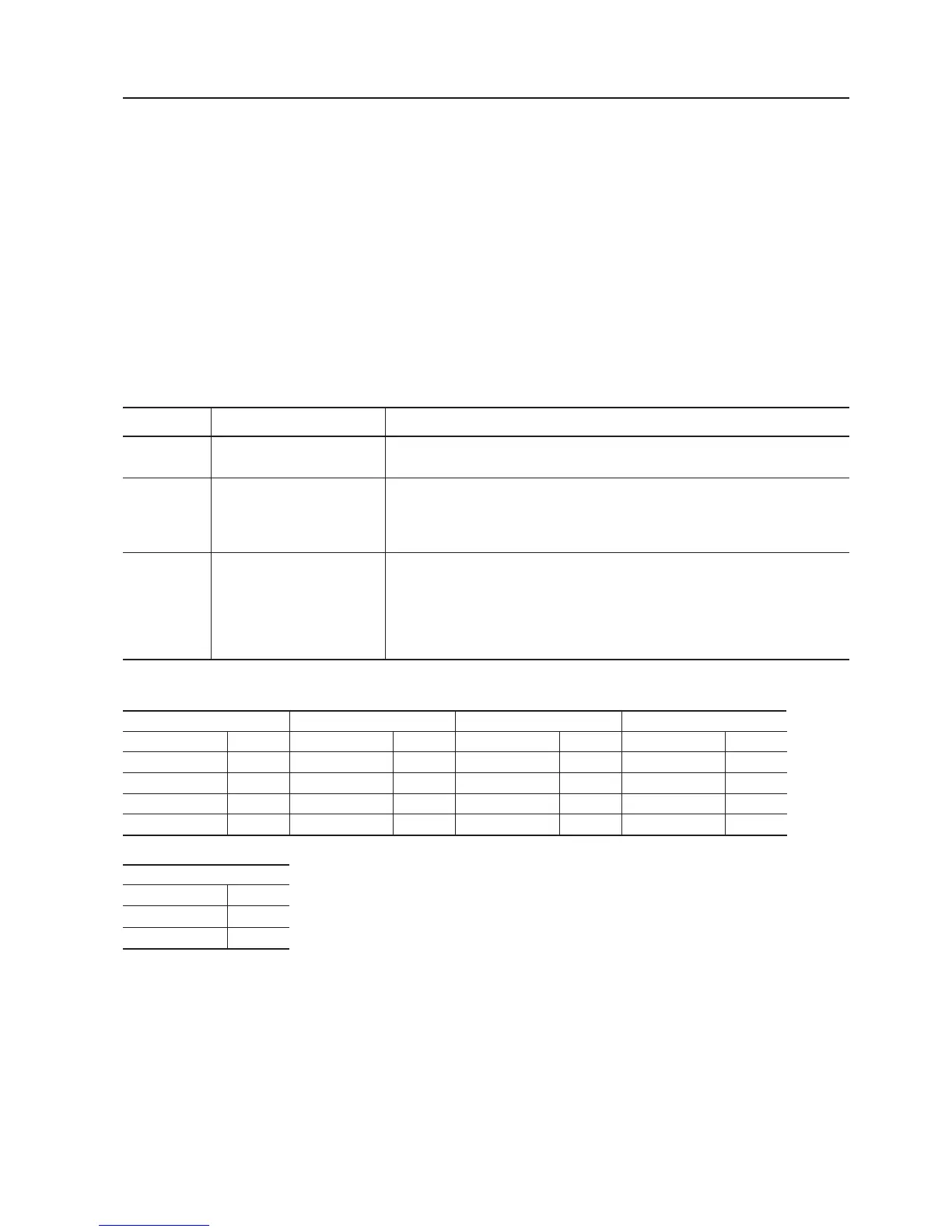